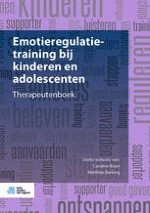Samenvatting
Een domein dat momenteel volop in ontwikkeling is, is het meten van emotieregulatie. Er zijn reeds heel wat mogelijkheden om zowel emotieregulatiestrategieën, reacties en processen als vaardigheden in kaart te brengen. Gezien de transdiagnostische aard van het concept emotieregulatie, wordt in dit hoofdstuk dieper ingegaan op het meten van emotieregulatie aan de hand van de verschillende niveaus zoals gedefinieerd door de Research Domain Criteria (RDoC), een theoretisch raamwerk dat de onderliggende mechanismen van psychopathologie in kaart tracht te brengen.
